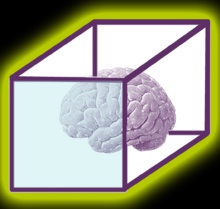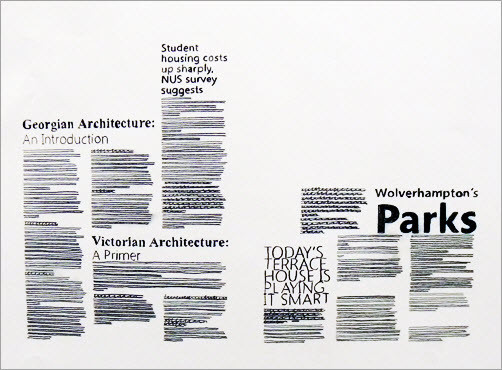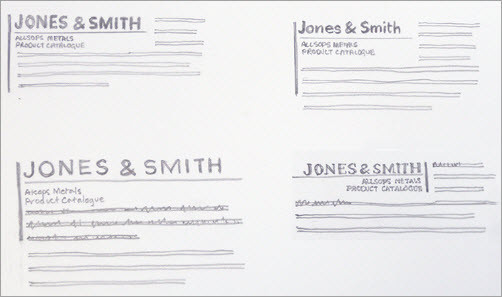
'Recognizing the need is the primary condition for design.'
Milton Glaser
Designing creative type from pencil to digital
Microsoft Word document [24.0 KB]
Activity 1 - Review the information below, download the document at the bottom of the page before completing the design activity.
As with most designers, being sure that we explore and select the most successful, memorable and stimulating designs is a vital aspect that underpins every project we undertake. For us, the beginning of a new challenge has never been as simple as asking ourselves what might be the best avenue to take and then sitting down at a computer and attempting to fulfill that idea.
After researching the subject matter, we will almost always begin with a sheet of paper and pencil and draw out a variety of design options to help bring together and develop the breadth of ideas that are maturing in our minds. In this article, we will explore the use of drawing and mark-making as an integral part of the creative process.
An example of mark-making that helps to formulate design ideas for working with type and image. Note the changes in mark-making that indicate different levels of type.
Exploring design options on paper using drawing and mark-making is a great way to ensure that we are moving in the right direction with a project; plus, we don’t think this working process can be beaten for stimulating unexpected solutions that would otherwise have been very unlikely to see the daylight.
Designersl focus on different types of drawing and mark-making as problem-solving tools and skills; they form a vital part of visualizing and exploring design alternatives that involve quantities of type, with or without images.
Business card examples below

Translating Drawing Into Design
The art of this process is being able to translate the nuances of mark-making into the final work.
You should consider:
The evaluation of the drawings.
Adding subtle contrasts of tone and texture of the overall design
Select complimentary nuances in typeface, weight, tracking, kerning and leading.
Making the transition from smaller paper visuals to Web or print design can be difficult, and students often require guidence with this process. One helpful technique is to develop a template using the artwork and then fit the type around it.
The three images below show the process described above in action.
Page content by Carolyn Knight and Jessica Glaser (Abridged version) Full article found here
Activity 2 - Analysing magazines given out discuss with a peer(s) the techniques used to layout the type and images
Activity 3 - Follow the instructions below to create a layout for a magazine article, Homework is to complete
Questions:
Download the .doc file, save it and open it
2 points
Review the article in the .doc file and then find 4 or more images to support the content
6 points
Using pencil and paper sketch development ideas for a layout
6 points
Create an effective layout for the magazine article
6 points
Microsoft Word document [26.0 KB]
Activity 4 (Extension) - Re-enforce your typography learning by reviewing the presentation below.
Questions
Who invented the Guttenberg press?
2 points
Describe the difference between a letterform(font, typeface) and a Typestyle?
5 points
When designing text we often use grids and guidelines, explain why
3 points
Name 3 of the princeiples of design that can be applied to typography
3 points
Describe the effect of those principles on text, give examples if possible i.e. Emphasis draws your eye to the text
7 points




